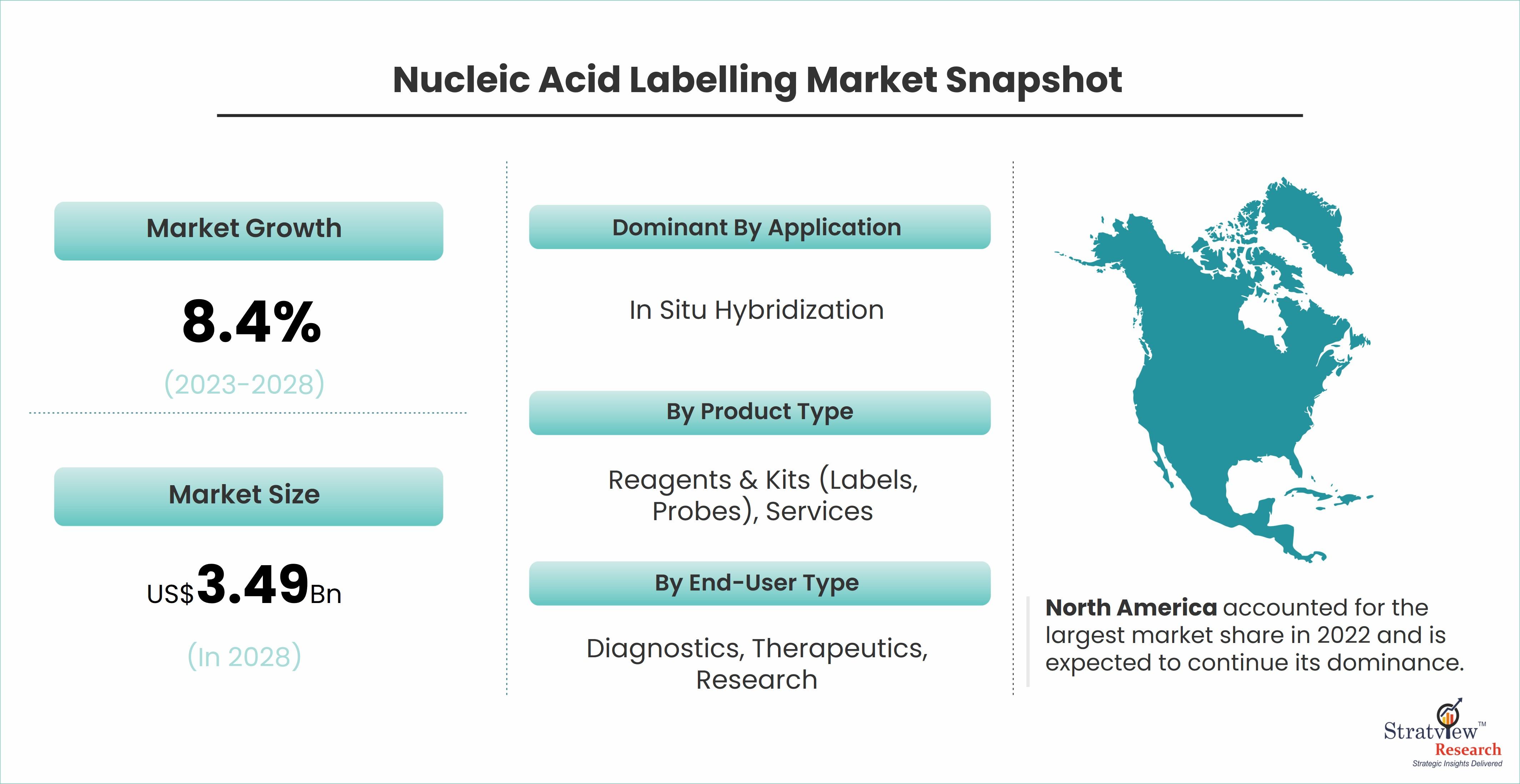According to Stratview Research, the nucleic acid labelling market was estimated at USD 2.15 billion in 2022 and is likely to grow at a CAGR of 8.47% during 2023-2028 to reach USD 3.49 billion in 2028.
In the vast landscape of molecular biology and genetic research, the ability to illuminate the intricate pathways of life at the molecular level is essential. Nucleic acid labelling serves as a guiding light in this pursuit, illuminating the path of discovery by enabling scientists to visualize, track, and analyze genetic material with remarkable precision. In this article, we delve into the dynamic world of nucleic acid labelling, exploring the latest trends shaping the field and propelling scientific discovery forward.
The Significance of Nucleic Acid Labelling
Nucleic acids—DNA and RNA—contain the blueprint of life, encoding the instructions for the development, functioning, and diversity of all living organisms. Nucleic acid labelling involves attaching fluorescent dyes, radioactive isotopes, or other detectable markers to specific regions of DNA or RNA molecules. This labelling allows researchers to observe the behavior of nucleic acids in real-time, decipher their functions, and unravel the mysteries of genetics and molecular biology.
Trends Driving Innovation
The field of nucleic acid labelling is marked by continuous innovation, driven by the quest for greater sensitivity, specificity, and versatility in labelling techniques. One of the prominent trends shaping the field is the development of novel labelling chemistries and probes that offer enhanced performance and compatibility with various downstream applications. These advanced labelling technologies enable researchers to probe deeper into the complexities of the genome and transcriptome, uncovering hidden patterns and regulatory mechanisms.
Additionally, the trend towards multiplexed labelling is gaining momentum, allowing researchers to simultaneously detect multiple nucleic acid targets within the same sample. Multiplexed labelling offers a comprehensive view of gene expression, genetic variations, and molecular interactions, accelerating the pace of discovery and enabling more nuanced analyses of complex biological systems.
Integration with High-Throughput Technologies
Advancements in high-throughput technologies, such as next-generation sequencing (NGS) and microarray analysis, are driving the integration of nucleic acid labelling into large-scale genomic and transcriptomic studies. NGS platforms equipped with sequencing-by-synthesis chemistry enable researchers to sequence millions of DNA fragments in parallel, while microarray platforms allow for the simultaneous interrogation of thousands of RNA transcripts. By incorporating nucleic acid labelling into these high-throughput workflows, researchers can generate vast amounts of data with unprecedented speed and efficiency, uncovering novel insights into gene expression, genetic variation, and disease mechanisms.
Applications Across Disciplines
The applications of nucleic acid labelling extend across a diverse range of scientific disciplines, from basic research to clinical diagnostics and drug discovery. In basic research, nucleic acid labelling is used to study gene expression dynamics, identify transcription factor binding sites, and elucidate the regulatory networks governing cellular processes. In clinical diagnostics, nucleic acid labelling facilitates the detection of infectious pathogens, genetic mutations, and cancer biomarkers, enabling early diagnosis and personalized treatment strategies. Moreover, in drug discovery and development, nucleic acid labelling plays a crucial role in target identification, validation, and pharmacogenomic studies, guiding the development of precision therapeutics tailored to individual patients.
Future Outlook
As we look to the future, the field of nucleic acid labelling holds immense promise for further innovation and discovery. Emerging trends such as single-molecule imaging, CRISPR-based labelling, and spatial transcriptomics are poised to revolutionize our understanding of genetic regulation and cellular dynamics. By harnessing the power of nucleic acid labelling, researchers will continue to brighten the path of discovery, illuminating the mysteries of life and paving the way for transformative advances in medicine, biotechnology, and beyond.
